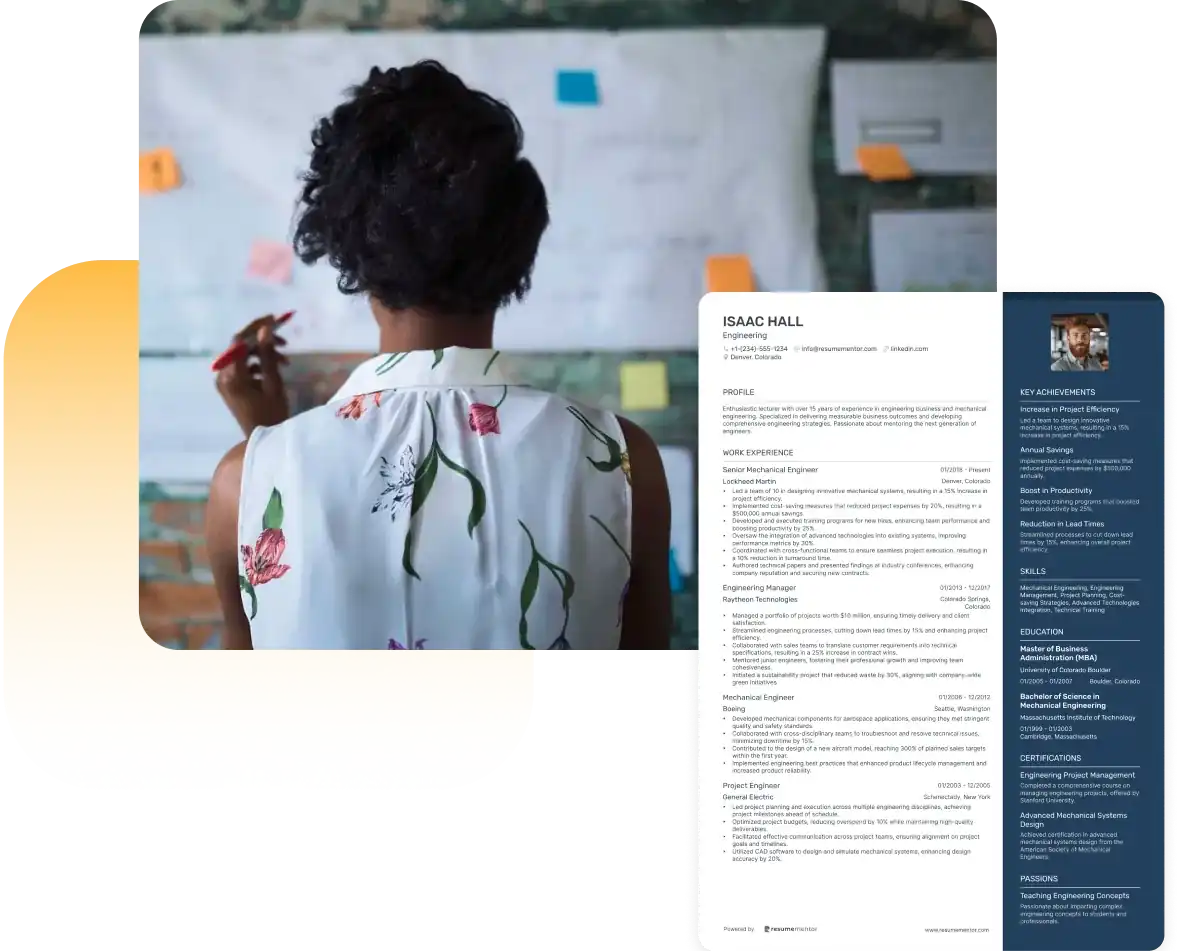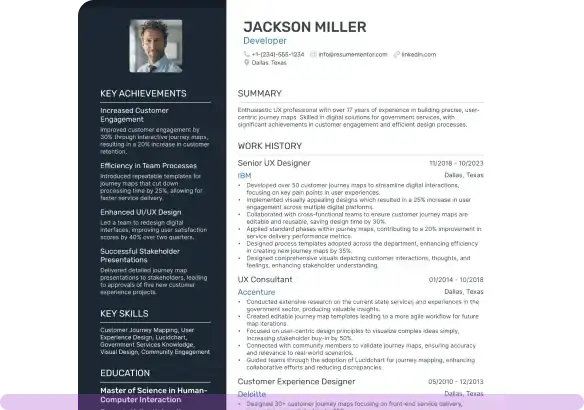How to List Certifications on a Resume in 2024 (+ Examples)

Sep 12, 2024
|
12 min read
Show off your accomplishments like a pro with our simple guide.
Certificates are so often the beating heart of your application. Including relevant certifications on your resume can set you apart from the crowd and show the hiring manager that you have the right skills for the job. If you’ve worked hard to gain high-level grades, you’re going to want to show them off.
However, there’s a right and a wrong way to list professional certifications. Choosing the perfect format, style, and packing in the right details is a must. So, how do you master this art?
In this guide, we’ll explain how to list certifications on a resume and serve up some resume certification examples to give you all the inspiration you need. Let’s get started.
Key takeaways
- Listing certifications on your resume will give you the competitive edge… but only if they’re relevant!
- Include certifications in a dedicated section, your education section, and/or your summary.
- Be sure to include all of the details that a hiring manager needs about your certificate.
- Choose the right order to list your certificates—chronologically or according to priority.
- Remember, always keep your list of certificates up to date on your resume!
What are resume certifications?
Before we go any further, let’s start with a quick definition. Professional certifications are credentials awarded by professional organizations or educational institutions. Certificates showcase your specific skills or knowledge in a particular field or profession.
Let’s take a look at the different types available:
Types of certificates
- Professional: Most often awarded by professional associations or educational institutions, these certificates validate your professional knowledge and skills.
- Technical: These certificates focus on specific technical skills or expertise, often relating to technology, engineering, or even trades.
- Industry-specific: Finally, these certificates are specific to your industry, showing off your expertise, industry standards and best practices.
Most often, professional certificates fall into the categories we’ve covered above. The awarding body will depend on the industry you’re in.
Is your resume good enough?
Drop your resume here or choose a file.
PDF & DOCX only. Max 2MB file size.
Professional certificates vs. degrees and licenses
Professional certificates are not the same as degrees and licenses. Degrees often take several years to complete and are undertaken at universities or colleges. These offer an in-depth understanding of the subject matter while professional certificates take less time to complete and offer career advancement.
Licenses are often industry-specific and may be legally-required when you practice in specific fields. You may need to renew certain professional licenses on a regular basis to continue working. Not all licenses require you to take a full course but some do.
When should you include certification on a resume
Before we dive into how to list certificates on a resume, let’s talk about when to do it. You shouldn’t whack any old certificates on your resume. Instead, you need to be strategic about it.
Here are some scenarios when to include professional certificates on your application:
Include certificates:
- If the employer requires you to have certain certificates, you need to highlight them clearly on your resume.
- Should your professional certificate align directly with the vacancy you’re applying to, including it will boost your chance of success.
- On the job advert, the hiring manager will outline the core skills you need. If you have a professional certificate that demonstrates one of these skills, you should list it on your resume.
- When you lack work experience, you can bolster your resume by listing relevant certifications.
Adding certificates to your resume is a small tweak, which could make a big difference. When you’re trying to stand out against a sea of applicants, it’s these additions that can grab the hiring manager’s attention.
Avoid providing irrelevant certificates!
Whenever you list a professional certificate on your resume, ensure it’s relevant to the position or industry.
For example, if you’re applying to be a veterinary nurse, including a creative writing certificate is an odd move. It’s likely to make the hiring manager question your dedication to the field and will raise questions about your candidacy.
How to list certifications on your resume
Learning how to list certifications on your resume doesn’t have to be hard. The aim of the game is to make it easy for the reader to understand your qualifications. For that reason, it’s smart to use a solid structure throughout your resume.
Here’s what you need to include when listing certificates (in the following order):
What to include when listing certificates
- Certification name: Include the award name exactly as it’s listed on the certificate.
- Issuing organization: Next, add the organization name. You can find this on your certificate. It’s usually the same as the course provider.
- Date earned: Add the date that you received the certificate.
- Modules (if specialized): If you completed specialized modules that align with the core competencies, you can bullet-point them.
- Expiration date (if applicable): Should your certificate expire, include the date.
- Location (if relevant): If you completed your certificate at a specific location (as opposed to online), include that too.
Where to include certifications on your resume
As a general rule, include your professional certificates in a dedicated "Certifications and Licenses" section. This makes it easy for the hiring manager to find at a glance. However, if you received it as part of your formal education, you can slide it into your Education section.
Want to brag about your certificate? If it comes complete with an acronym, you can list it after your name. For example, you may put “Sam Smith CPA” if you’re a Certified Public Accountant. You might also want to mention it in your Summary or Objective if it’ll give you the competitive edge.
Resume certifications examples
We’ve already explained how to list certifications on a resume, but let’s take a look at how they look.
Check out our resume certification examples, listed according to the section:
Header example
When including certificates in your resume header, you only need to write the acronym. Add these letters to the end of your name, in order of significance.
Summary section example
Your summary—or objective—is a great place to shout about your professional certifications. Mention the certificate you have and include results-based points to back up your experience.
Certification and licenses section example
Do you have a selection of certificates and licenses under your belt? If so, we recommend creating a dedicated section that showcases your accomplishments.
Education section example
If you achieved your certificate during your formal education, you can list it in this section. Make sure your certificate is a separate point and include the relevant information as follows:
- •Graduated with honors
- •Completed coursework in consumer behavior and market research
Now you know how to include certifications on your resume, let’s talk about in-progress certificates.
How to list in-progress certifications on a resume
Currently pursuing a professional certificate? You don’t have to wait until it’s completed to showcase it. Feel free to include in-progress certifications on your resume, but be sure to clearly indicate that you’re still working towards them. This demonstrates your commitment to professional growth and keeps potential employers informed about your ongoing development.
Here are two examples:
Certification and licenses section example
If you’re including your in-progress certificate in a dedicated section, write the words “In Progress” next to it. You can include a hyphen, as we have in the example below.
Summary section example
Within your summary section, you can be direct about any in-progress certificates. For instance, you might use the words “currently pursuing” and then list the full name of the certification.
Tips for listing certifications on a resume
Here are some excellent quick tips that are easy to remember and effective to use:
- Include the name and acronym: For example, you might write “Certified ScrumMaster (CSM).” This makes it clear what certificate you’ve gained.
- Don’t miss out the details: Include all the basic details such as the dates, name of awarding body, and any specific modules you want to mention.
- Order them well: Either list your certificates in chronological order or priority order.
- Keep them up to date: Regularly go back and make sure this section is up to date.
- Make sure they’re relevant: Always make sure the certifications you include are relevant. Do they directly relate to the job and/or field you’re applying to?
Take a look at our resume example complete with professional certifications:
- •Led three cross-functional Scrum teams, implementing agile best practices that resulted in a 30% improvement in project delivery times.
- •Optimized JIRA workflows and reporting processes, enhancing the team's ability to track progress and reduce project delays by 25%.
- •Collaborated with developers on React and Node.js projects, improving adherence to coding standards and reducing deployment errors by 20%.
- •Introduced DevOps principles, including CI/CD pipelines, improving deployment efficiency by 35% across multiple projects.
- •Implemented comprehensive risk assessment protocols, mitigating potential project risks and reducing rework by 15%.
- •Delivered continuous improvement workshops, fostering a culture of learning and collaboration, resulting in a 10% increase in team engagement.
- •Facilitated daily stand-ups and sprint planning for two agile teams, improving sprint completion rates by 20%.
- •Served as a bridge between development teams and stakeholders, ensuring timely project updates and reducing miscommunication by 30%.
- •Reduced backlog items by 15% through prioritization workshops, ensuring the teams were focused on high-value tasks.
- •Utilized Microsoft Azure to assist teams in seamless application integration, resulting in a 25% improvement in deployment speed.
- •Led sprint retrospectives, identifying areas for improvement and increasing team velocity by 10% over six months.
- •Coordinated project timelines and resource allocation, resulting in a 15% increase in on-time project delivery.
- •Monitored key performance indicators, providing actionable insights to stakeholders that reduced project overruns by 10%.
- •Managed cross-functional collaboration between development, QA, and product teams, improving overall efficiency by 12%.
- •Ensured documentation and project tracking in JIRA, resulting in more transparent reporting and better project tracking.
Conclusion
Listing certificates on your resume is a savvy way to elevate your application. However, you need to list them correctly and make sure they’re clear for the reader. You should also ensure that your resume certifications are relevant to the job you’re applying for.
Want to increase your chances of job-seeking success? Use our drag-and-drop resume builder to quickly create a beautiful resume optimized for ATS.

Continue Reading
Check more recommended readings to get the job of your dreams.
Resume
Resources
Tools
© 2024. All rights reserved.
Made with love by people who care.
